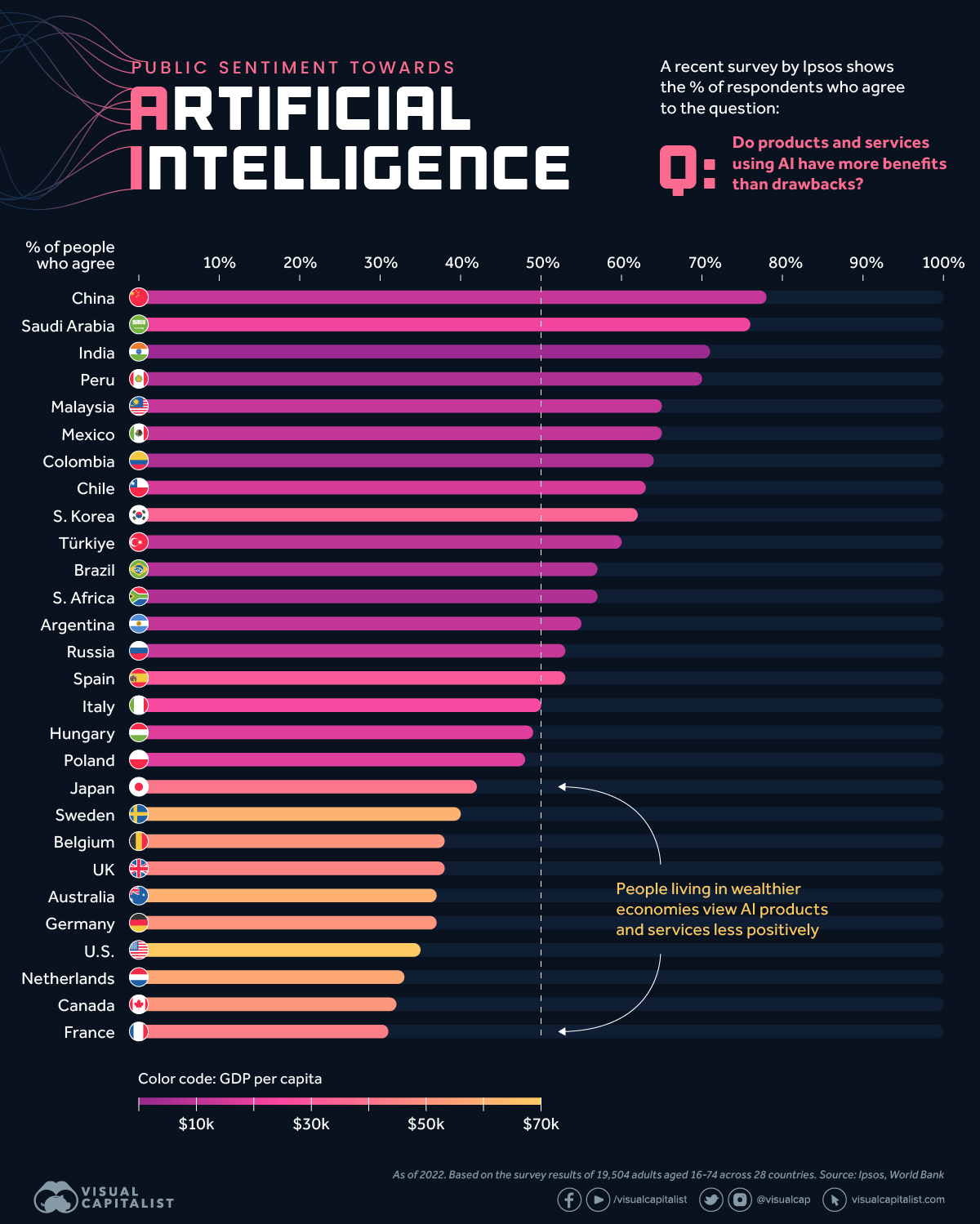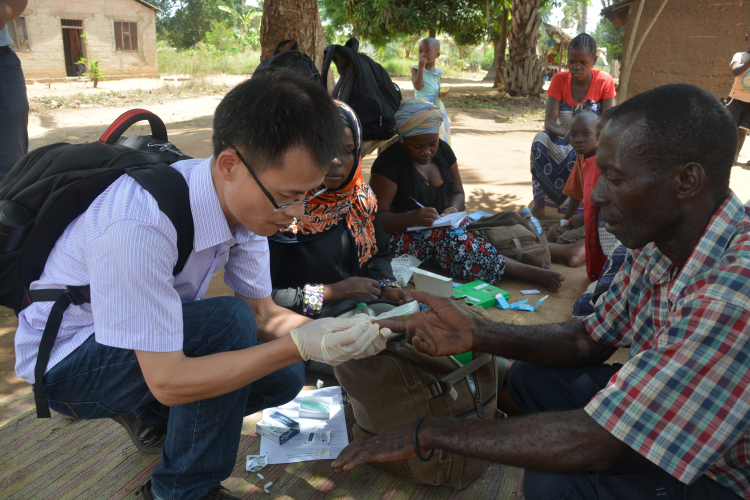AI Can Help, China Can Help: A Peek into the Future of Global Health

August 24, 2023 | Zhiye Yang, 2023 Summer Intern, Bridge Consulting
July 6 to 7 will surely be marked as a milestone in the history of AI development. A global summit on artificial intelligence of the largest scale so far took place in Geneva, featuring the world’s first humanoid press conference held by AI and robots. As SDG 3 (“Good health and well-being”) was constantly mentioned in the summit, health is definitely one of the key areas that the international community is attempting to use AI to improve.
Besides all the in-depth boring speeches and talks, an exhibition of robotics gave me a peek at what the possible future with AI in global health would look like. From information networks for pandemic prevention to prototypes of prosthetic limbs with sensations, the field of AI and robotics is on fire! I learned about HIVE, a WHO-powered online platform that aims to promote access to health information and knowledge sharing among communities to fight infodemic. There was AUTHUR (ARTHritis Ultrasound Robot) on display, an AI-driven automated ultrasound system that could facilitate Rheumatoid Arthritis diagnosis, simply through screen-clicking and hand-scanning. I tried out “e-skin“, a technology that can send electronic pulses to the brain, allowing robots to feel the objects touching their “fingertips”. And I got to hug the cuddly robot Paro who is used as part of existing therapy or pressure-release treatment for traumatized patients.

Polaroids at the UN-initiated AI for Good Summit
Unitree, Xiaomi, and many other Chinese companies also presented their answers to achieving the SDG 3. Wandering among the cutting-edged AI and robots that are very much likely to change millions of lives in years to come, I can say it was truly a grand gala for global health.
Outside the summit, AI is already revolutionizing health both at the doctor’s and patient’s end
Before reaching hospitals, AI has been put into use for assisting medical research and development on the frontline. Pharmaceutical companies, such as AstraZeneca, have been utilizing large language models, such as ChatGPT, in drug discovery. By enabling the analysis of vast amounts of clinical text and scientific literature, AI can greatly improve the efficiency and accuracy of medicine development workflows.
Moving on to the next phase of a health system, as shown in the Summit’s exhibition, disease diagnosis has also become a blue sea for AI development. It is no longer a dream that AI can analyze a large amount of patient data, including medical 2D/3D imaging, vital signs (e.g., body temperature, pulse rate, respiration rate, and blood pressure), demographic information, medical history, and test results. With the help of algorithms, healthcare providers can take advantage of AI-based medical diagnostics and diagnose diseases more effectively and quickly.
The most relevant application is the utility aspect of AI in digital health, reaching out to all households. Whether via virtual calls on the phone or chatbots on webpages, AI has been fully capable of doing the initial interaction with the patient before handing over to a physician (if needed). The ability behind this is derived from natural language processing (NLP), allowing AI to recognize speech and text, and thus answer the patient’s needs accordingly. This process actually means a lot to increasing accessibility of quality healthcare services in every corner of the world.
China, of course, has been riding the tide
Even as early as during the pandemic, China has been using AI technologies to combat COVID-19. The revolutionized ICTs enabled the country to provide scale healthcare services to the people, such as rapid screening of tests to detect cases and curb transmission, telemedicine and remote consultation powered by 5G, and multi-functional robots to disinfect public areas to reduce community infections.
An example of large-scale use was the AI-powered infrared system that could screen large populations using facial recognition and detect changes in passengers’ body temperature. The system, developed by Baidu or other Internet giants, was installed in public areas that were deemed to have higher risks of transmission and infection, such as railway stations, schools, and hospitals. It could examine up to 200 people in one minute without disrupting passenger flow.
Ever since then, a larger scope of AI application has been gathering momentum in the country, further pushing China on the road of pro-AI industrial reformation.

Chinese people have an overwhelmingly positive sentiment and supportive attitude towards AI | Source: Visual Capitalist
A 2022 McKinsey report foresaw that the next frontier for AI in China could add $600 billion to its economy, provided that more efforts are put into data, talent, technology, strategy, and market collaboration. In fact, that’s what the country is trying to do.
According to Financial Times report, China has a massive data advantage when it comes to medical AI. Chinese companies with abundant data scientists, elbowing foreign counterparts, are set to take the opportunity to upgrade their technological innovations. Driven by the need of the market, they are eager to recruit talents and develop AI/robotics products – not only Alibaba and other tech giants, but also smaller emerging companies that wish to share a bite of the cake. For example, one of them already has humanoid robots put into mass production to cope with China’s increasingly aging population. Able to act as medical staff, carrying heavy stuff and patients, the GR-1 robots are to be deployed in healthcare facilities and fill up the possible labor shortage in the future. “As we move forward, the entire GR-1 could be a caregiver, could be a therapy assistant, can be a companion at home for the elderly who stay alone,” said the CEO of the firm.
The government is also keeping up with strategic planning and institutional set-ups. AI is written into the national strategy, which supports AI industry to step onto world’s leading level by 2030. In July 2023, China has issued the world’s first regulations on generative AI (《生成式人工智能服务管理暂行办法》), the basic principle of which is to encourage and support the development of the AI industry and make sure the AI-related contents, services, and products are under prudent management.
The synergy of all these factors mentioned above has proved that China was, is, and will be a forerunner in the application of AI and digital health technologies.
Like any gamechanger, AI in global health is nevertheless also controversial
One of the most prominent concerns is that due to an uneven distribution of Internet access, AI raises question over the issue of equity more than ever. Building the corresponding ICT infrastructure, which could be a challenge for less developed areas, is undoubtedly a foundation for AI and robotics technologies to take off on.
A lot of people would worry about another delusion – being laid off by AI – in our cases, AI replacing doctors and health workers. There’s little doubt that the workplace with AI involved will look different from now and the future jobs can be impacted to some extent. Still, in my opinion, it might be too early to cry over the dystopian nightmare. It is more likely that, as Economist Richard Baldwin put it in another AI-related event, “AI won’t take over our jobs, it’s someone equipped with AI technology who might”.
Any unreliable predictions are not helpful at all on that regard. The future of AI in global health is on hold. However, there’s one thing for sure – China will be a part of it.
About The Author
Zhiye Yang
Zhiye Yang is an Intern at Bridge Consulting. She is currently a Master’s student at Geneva Graduate Institute with a specialization in Global Health. Her research interests include Health Promotion, Health Diplomacy, and Digital Health. Find Zhiye on LinkedIn.



